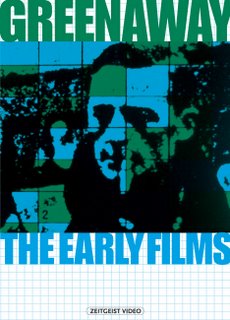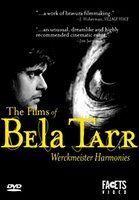 Showgirls
Showgirls - dir. Paul Verhoeven - 1995 - USA
So, I'm a little late in the game. In what GreenCine Daily called
"Blog Orgy," a well-known blogger by the name of
Girish declared a worldwide blog-a-thon on January 11th to commemorate the 10-year anniversary of
Showgirls' Dutch cinema release. (I'm particularly fond of the quote Flickhead found of Jacques Rivette (
La Belle noiseuse,
Va savoir) hailing it as one of the greats of American cinema) As I was rather blind to other bloggers and new at the time, I did not jump on the bandwagon. Nor did I with Girish's recent
Code Unknown (
Code inconnu) blog
marathon. Strange to know you're not the only sick-o who's been thinking a lot about Michael Haneke and Paul Verhoeven at the same time. So I suppose it's better late than never to write about a film whose genius has only been discovered in the past few years... the one, the only... Paul Verhoeven's
Showgirls!

That anyone was surprised by
Showgirls is a true mystery to me. Verhoeven himself has always danced on the dramatically-thin line between delicious camp and complete misery. Most of his prior films succeeded on the first level.
The 4th Man, his tasty homage to Hitchcock, takes the ever-prevalent undercurrents of homosexuality in Hitch’s works and showcases them in lurid detail as a gay novelist (Jeroen Krabbé) who embarks on a sexual affair with an androgynous beautician (Renée Soutendijk) who may or may not have killed her former husbands so that he can simply attract her hunky boyfriend (Thom Hoffman).
Flesh + Blood, Verhoeven’s seedy medieval parable, finds ruthless vagabond Rutger Hauer (in one of his best performances) seducing virgin maiden Jennifer Jason Leigh. And of course, there’s
Basic Instinct, Verhoeven’s first teaming with Joe Eszterhas. Nearly all of his films contain a peculiar morality that never seems to successfully eclipse the rest of the film’s sensationalistic sex and violence. And never does it work better than in
Showgirls, his “MGM musical” of the perils of stardom, a film so heinously bad that it can be seen as nothing short of a masterpiece.

Unlike
Mommie Dearest’s initial ascension to cult classic,
Showgirls was reviled and largely dismissed by both critics and audiences upon release, further distancing studio execs from the NC-17 rating, one created to allow for non-pornographic, adult-oriented films to play in multiplexes. What’s most amusing about
Showgirls’ NC-17 is that it’s pretty widely-regarded as one of the least sexy “sex movies” ever made, one that makes David Cronenberg’s
Crash seem like a toe-curler. There are several reasons one might explain this lack of sexiness (both of which are hilariously dissected on the
V.I.P. Edition of the film, with a priceless commentary by
Showgirls aficionado and comedian David Schmader, pictured above). Firstly, all of the characters (and most importantly the women, in Eszterhas' world) do not seem to exist in any sort of world we're acquainted with. Our heroine Nomi Malone (Elizabeth Berkely, in one of the best bad screen performances of all time) solves her problems by slamming doors, storming out of rooms and arguments, and bascially pushes every character in the film at least once; perhaps this is Verhoeven's attempt at foreshadowing Nomi's rise to glory after pushing the star of the show Cristal Connors (the wonderful Gina Gershon) down the stairs. You saw her push everyone else in the film, so you know the damn girl just can't control her hands! Secondly, the tag-team of Verhoeven and Eszterhas make sure that every intended moment of erotica be followed by a cold, wet fish thrown onto your crotch. Berkely’s seizure-like movements are truly the visual equivalent of that wet fish. In another scene whose disgustingness and hilarity is expertly pointed out by Schmader in his commentary, Nomi fends off a sexual advance by making her partner inspect her menstrual cycle with his fingers. I’ll take James Spader fucking Rosanna Arquette’s leg wound over that any day!

So where does the appeal come from? According to Schmader who quotes Verhoeven's essays featured in the
Showgirls coffee-table book, he takes the film very seriously. He shares his thoughts on the comparison between
Showgirls and ancient and Christian mythology and
Pygmalion, in addition to rants about the power-exchange between Nomi and Cristal. And when thinking about the film in a purely thematic level, this makes a bit of sense. Las Vegas (especially seen through the eyes of a foreigner) seems far more fitting of an American Hell than cinema’s normal target: Los Angeles. We’ve seen Mike Figgis’
Leaving Las Vegas, so therefore we know Las Vegas is a town of empty promises and death. With all of its excess, Las Vegas reeks of the gaudiest of deaths, a far more pungent smell than the sheep-in-wolves-clothing nature of LA. You might note the parallels that, upon first viewing, seem cliché in the first and last shots of the film. In both scenes, Nomi is hitchhiking her way out of one town to the next. In the first shot, we see a Las Vegas mile counter behind her; in the second, there’s another mile counter that reads Los Angeles. There’s a strange clever irony about this, as Eszterhas has just superficially “redeemed” Nomi only to take her to yet another dimension of hell. A strange glowing sign outside of James’ apartment reads “Jesus is Coming,” calling to mind the apocalyptic billboard-ridden LA wasteland depicted in the films of Gregg Araki. All of these ideas that Verhoeven plants in the coffee-table book appear perfectly fitting in theory for a film about a girl’s hedonistic rise to stardom, but this begs the question: has he actually seen the film?

While I will go into some greater detail about the nature of Eszterhas' revolting screenplay, I don't think one can truly understand
Showgirls without an understanding of Elizabeth Berkley and Verhoeven's use of her. Every frame she's in screams of unconscious badness. Nothing about her is remotely believable, and not only that, Nomi looks like plastic blow-up doll throughout the entire film. As the thesis for Schmader’s appreciation of Showgirls, he states that “everyone i

nvolved in the making of this film is making the worst possible decision at every point in the film.” You can see this statement come to life in even some of the subtler moments of
Showgirls. Even the way Nomi puts ketchup on her fries is awfully hard to watch! It’s not exactly through Nomi’s eyes that see this world; Verhoeven shows us stuff (Kyle MacLachlan’s phone call, Nomi’s stripper friend Penny, also known as Hope (oh, Jesus), hiding in James’ apartment) that Nomi does not see. But it’s not as if the seediness of this world is blind to Nomi… and, really, it’s not like she’s not just as seedy as her surroundings. It’s certainly one thing for Verhoeven to make Nomi and her rise to fame completely repugnant, but it’s quite another when we get shots like the one in the pool, when she has a seizure (er, fucks) MacLachlan (Oh, Agent Cooper!). Just as the sex terminates, Nomi leans back and a geyser of water from the tacky dolphin fountains erupts on her face as MacLachlan empties his dick (look to your left). This is the most notable moment where Verhoeven joins in on the absurdity, instead of letting Berkley and Eszterhas have all the fun.

Berkeley’s unbelievable performance greatly compliments the script itself. As Schmader remarks, “Eszterhas has no access to real women, so in
Showgirls, the tender moments between women involve doing each other’s nails, eating potato chips, or talking about their breasts.” While this was something I noticed without the commentary, Schmader refers to this as a classic
Showgirls motif that surprisingly runs fluid throughout the film. Many would like to call Eszterhas (especially after the deplorable
Jade) one of the worst screenwriters of our time, but he paid attention during screenwriting class! There’s even a scene where Cristal and Nomi toast with a god-damn potato chip. And while the script itself is painfully formulaic (hello,
All About Eve!), the film itself works so well, because everyone seems to exist in some other dimension or separate planet. Really, this makes the metaphor for Las Vegas as Hell a lot more believable.

I might argue though that the beauty of
Showgirls is its own bizarre earnestness. Who doesn’t believe that Joe Eszterhas thinks this is how real women act? And though it’s almost too easy to pick fun at Elizabeth Berkley’s attempt at Hollywood fame, but can’t you see how honest she is here? Can’t you see that she thought she was doing good work? It’s pretty much understood that, unlike the failed attempt at stardom suffered by Berkley (maybe she should have pushed Claire Danes down a staircase) and a career killer for MacLachlan, Gina Gershon emerged unscathed, and
Showgirls actually made her career. It’s probably because her performance was the only one that felt conscious of her surroundings. As I mentioned earlier, Verhoeven wanted this film to be his glitzy, trashy masterpiece, and when the film tanked, he was very upset. There’s no way I can prove the validity of Verhoeven’s statements, but doesn’t his adoration for the film fit into the earnestness of Eszterhas’ screenplay and Berkley’s performance? Self-conscious bad movies don’t really stand the test of time. Why do you think people still remember
Plan 9 from Outer Space? Because like Verhoeven, Eszterhas, and Berkley, Ed Wood has delusions of grandeur.
Showgirls was supposed to be a masterpiece of behind-the-curtain seediness, yet in its extreme failure, years after its original release, does it not somehow reach the same pinnacle that it had so hoped to accomplish?
 For all those wild and crazy Peter Greenaway fans out there (I know there aren't many), Zeitgeist Video is releasing a collection of his early films, including the pseudo-documentary epic The Falls on April 11th, for all those who don't have a region-free DVD player (as BFI released all of these a long time ago on DVD). I think maybe this will encourage me to revist some of his best work, specifically A Zed and Two Noughts and, of course, The Cook, the Thief, His Wife and Her Lover, since I don't think his Tulse Luper Suitcases series will be in the States any time soon. Expect some longer criticisms of these films at a later date. Right now, I'm going to immerse myself in some lurid Abel Ferrara after finishing Rois et reine. Here's what you may be interested in on DVD tomorrow:
For all those wild and crazy Peter Greenaway fans out there (I know there aren't many), Zeitgeist Video is releasing a collection of his early films, including the pseudo-documentary epic The Falls on April 11th, for all those who don't have a region-free DVD player (as BFI released all of these a long time ago on DVD). I think maybe this will encourage me to revist some of his best work, specifically A Zed and Two Noughts and, of course, The Cook, the Thief, His Wife and Her Lover, since I don't think his Tulse Luper Suitcases series will be in the States any time soon. Expect some longer criticisms of these films at a later date. Right now, I'm going to immerse myself in some lurid Abel Ferrara after finishing Rois et reine. Here's what you may be interested in on DVD tomorrow: Where the Truth Lies - dir. Atom Egoyan - 2005 - Canada - Sony Pictures
Where the Truth Lies - dir. Atom Egoyan - 2005 - Canada - Sony Pictures Werckmeister Harmonies - dir. Bela Tarr - 2000 - Hungary - Facets
Werckmeister Harmonies - dir. Bela Tarr - 2000 - Hungary - Facets The Walerian Borowczyk Collection - Cult Epics
The Walerian Borowczyk Collection - Cult Epics






































